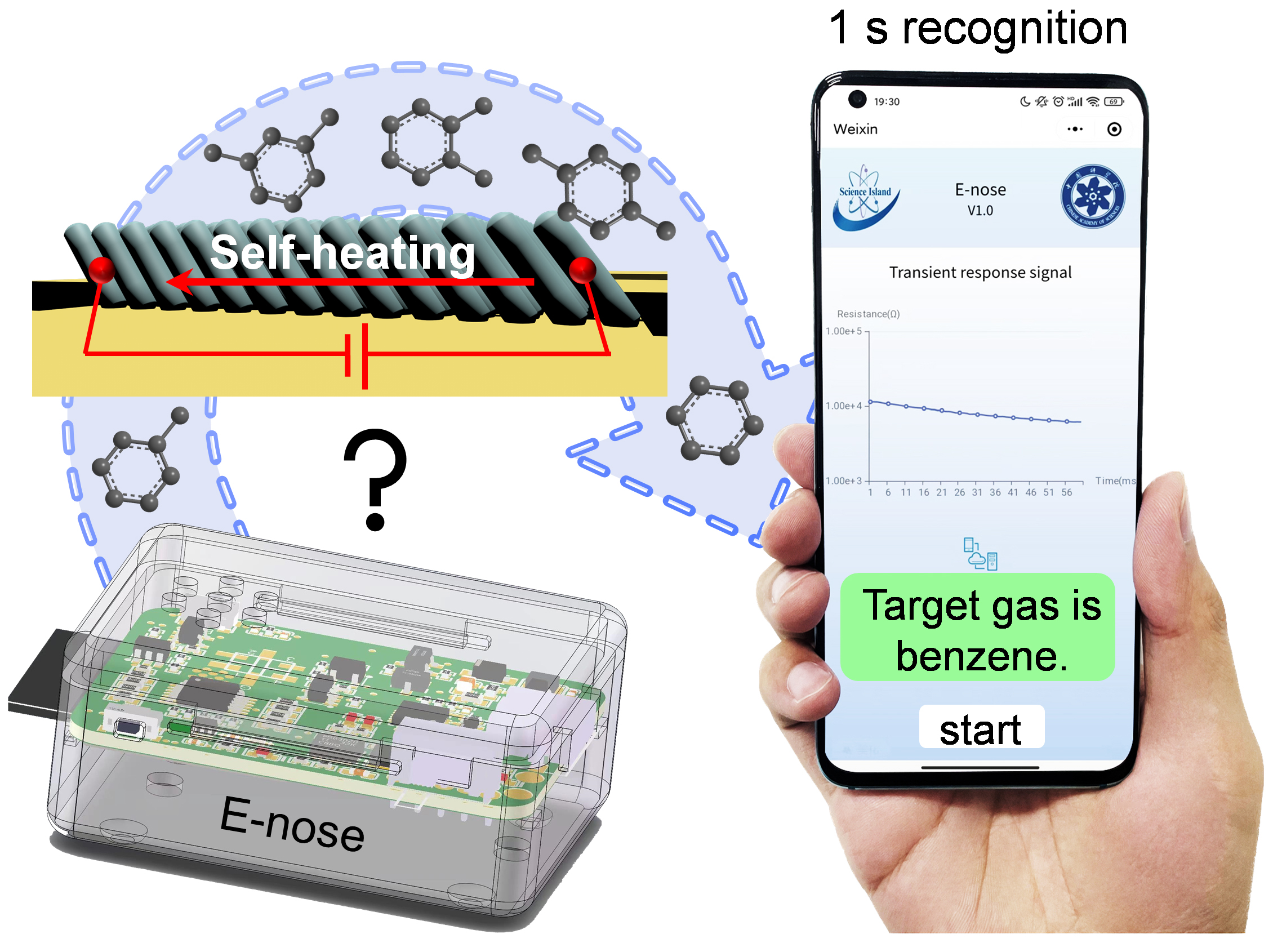
A recent study published in ACS Sensors highlights the development of a smart electronic nose (e-nose) by a research team led by Prof. MENG Gang from Hefei Institutes of Physical Science (HFIPS), Chinese Academy of Sciences (CAS). The novel e-nose utilizes self-heating modulation strategy to accurately distinguish various kinds of target gas molecules within just 1 second.
Significant progress has been achieved in gas molecule recognition using e-nose comprised of nonselective semiconductor gas sensors. However, extracting adequate molecular features within short time (<1 s) remains a big obstacle, which hinders the early warning applications of e-nose to lethal or explosive gases.
In this research, An innovative approach to temperature control and modulation has been developed as an alternative to the conventional method using external heaters. WO3 nanorods film prepared via oblique angle deposition (OAD) was employed as both a sensitive sensing layer and a stable self-heating layer. Owing to the ultrafast (~20 μs) thermal relaxation time, OAD WO3 sensor allows to generate sufficient electrical response features via self-heating temperature modulation.
This advancement has led to accurate discrimination of 12 gases molecules within 0.5–1 s, which is one order faster than the state-of-the-art e-noses.
Furthermore, a smart wireless e-nose system has been devised, enabling the precise and instantaneous identification of target gases in ambient air backgrounds.
This development demonstrated the potential applications of e-nose in the area of public health, according to the team.

Smart E-nose system based on the self-heating temperature modulation. (Image by LI Meng)